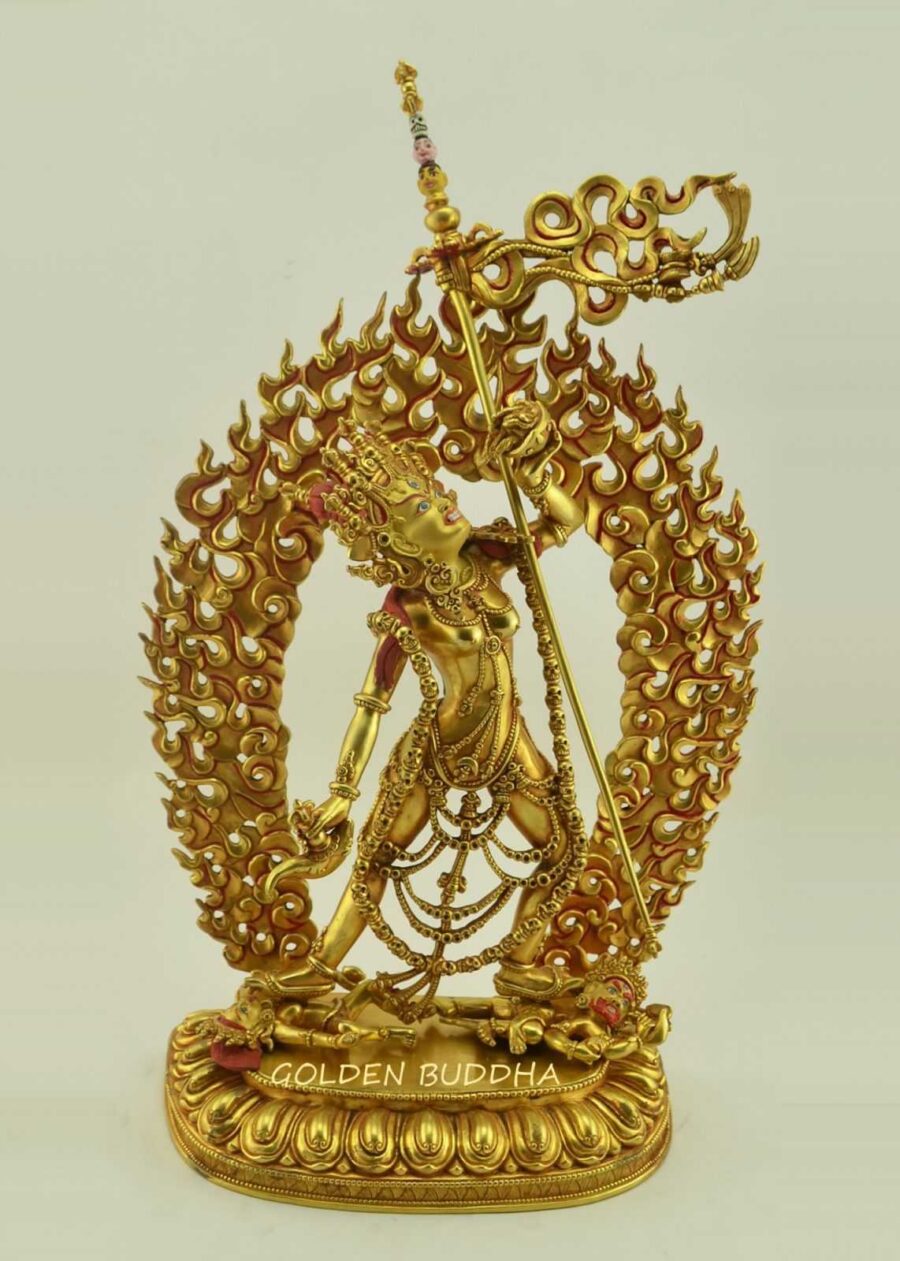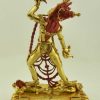This Vajrayogini statue for sale was handmade using the traditional lost wax sculpting method. As a result, the statue displays elegant detail and precision. The buyer of the statue can rest assured that they have procured a monastic quality sculpture. Indeed, the Nepali artisans have been the preferred source of the Tibetan monasteries for many centuries.
Our Vajrayogini statue for sale portrays a Tantric female Buddha who embodies the inseparability of great bliss and emptiness. Additionally, she represents the maharaga which translates from Sanskrit as “great passion”. However, this is the sublime form of desire known as transcendent passion. As a result, Vajrayogini is free from ignorance and selfishness. Therefore, she only works for the benefit or others and for the destruction of the craving ego.
Vajrayogini Statue Features
In the left hand of this Vajrayogini Buddha statue she holds the kapala. The kapala translates literally as “skull or forehead” from Sanskrit. In traditional ceremonies the Tibetan kapala is filled with human blood and it is used as a libation vessel by Buddhist and Hindu deities. Although the meaning is not meant to be gruesome or morbid. Instead the purpose is to show the deity’s open disdain for impermanence. As such, she stands on the principle worldly goddess red Kalarati with her right foot. Also, under her left foot is the principle worldly god – Bhairawa. Vajrayogini has transcended the frailties of greed, ill will and ignorance.
Against her left leg liens the khatvanga which is a weapon that has symbolic meaning in Buddhism and Hinduism. The presence of the khatvanga signifies that she is never separated from her consort – Chakrasamvara (Heruka). Additionally, there are three skulls impaled at the tip representing release from the three worlds (Trailokyas) of desire, form and formlessness.
This Vajrayogini Buddha statue depicts her surrounded by the flames of pristine awareness. Her diadem is decorated with the five skulls that represent the subjugation of the skandhas. Additionally, she wears a garland that is strung with 50 skulls over her shoulders. Furthermore, she has three eyes representing knowledge of the past, present and future. She stares upwards into the Pure Land of the Dakinis.













Reviews
There are no reviews yet.